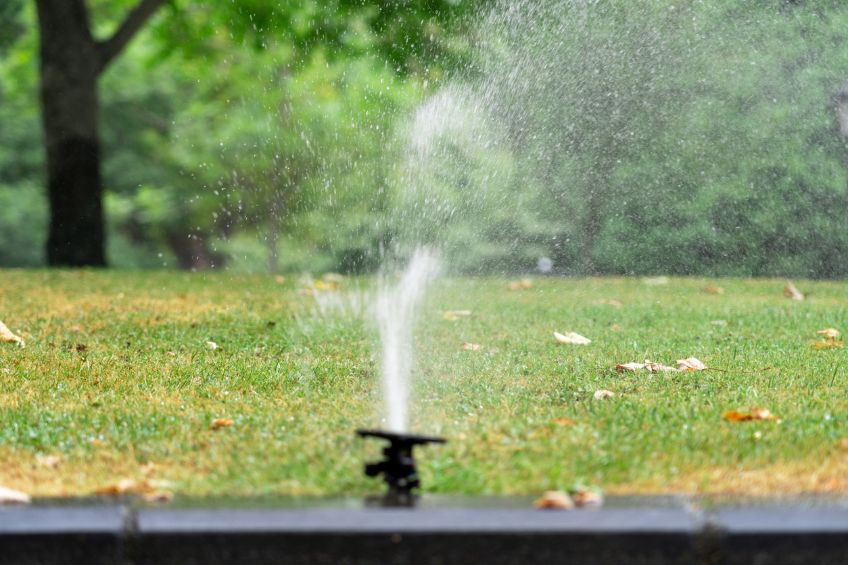As autumn comes in Salt Lake City, the crisp air and falling leaves indicate not just the change of season, but also the need for important lawn care changes. Tuning up your sprinkler system to ensure it runs smoothly before the winter weather arrives is an important part of the seasonal changeover. Proper sprinkler system maintenance in the fall will help you avoid costly repairs, conserve water, and keep your lawn healthy. Here's a complete guide to why a fall sprinkler tune-up is required, a maintenance checklist, how to identify and correct common problems, and winterizing suggestions for your system.
The Necessity of a Sprinkler System Tune-Up Before Cold Weather
In Salt Lake City, where winter temperatures can drop dramatically, a fall sprinkler tune-up is essential to safeguard your system from the destructive effects of freezing. Without adequate maintenance, water left in pipes can freeze, expand, and cause cracks or breaks, resulting in costly repairs. A well-maintained sprinkler system also assures effective water use, which promotes healthy grass and lowers water expenses. Addressing potential concerns in the fall saves you the headache of dealing with a malfunctioning system during the coldest months of the year.
A Checklist for Fall Sprinkler Maintenance
To prepare your sprinkler system for the fall and forthcoming winter, use this detailed checklist:
- Inspect Sprinkler Heads: Check all sprinkler heads for damage or clogs. Clean any debris and ensure they are functioning correctly.
- Check for Leaks: Walk your lawn and inspect for any visible leaks in the sprinkler lines or around the heads. Fix any leaks promptly to prevent water waste and potential damage.
- Test the System: Run your sprinkler system through a full cycle to ensure each zone is operating correctly. Listen for unusual sounds and observe the water distribution to identify any issues.
- Adjust Watering Schedule: As temperatures drop, lawns require less water. Adjust your sprinkler timer to reduce the frequency and duration of watering sessions.
- Replace Worn Components: Check for worn or damaged components such as seals, valves, and filters. Replace any parts that show signs of wear to maintain system efficiency.
- Raise Sprinkler Heads: If necessary, raise sprinkler heads to ensure they are level with the soil surface. This prevents them from getting damaged by falling leaves or debris.
How to Identify and Fix Common Issues with Sprinkler Systems in Autumn
During your fall checkup, you may notice common sprinkler system difficulties. Here's how to identify and repair them:
- Clogged Nozzles: If a sprinkler head is not spraying properly, it may be clogged with dirt or debris. Remove the nozzle, clean it thoroughly, and replace it.
- Low Water Pressure: Low pressure can result from leaks, clogged pipes, or a malfunctioning valve. Check for leaks and clean the pipes and valves to restore proper pressure.
- Uneven Watering: If certain areas of your lawn are dry while others are overwatered, adjust the sprinkler heads to ensure even coverage. You may also need to reposition or add additional heads.
Winterizing Your Sprinkler System: When and How to Do It
Winterizing your sprinkler system is an important step toward protecting it from freezing weather. Here's when and how you do it:
- Timing: In Salt Lake City, it's best to winterize your system before the first hard freeze, usually in late October or early November.
- Shut Off the Water Supply: Turn off the main water supply to the sprinkler system to prevent any new water from entering the pipes.
- Drain the System: Use the manual drain valves, automatic drain valves, or blow-out method to remove all water from the system. For the blow-out method, use an air compressor to blow out any remaining water from the pipes.
- Insulate Exposed Components: Wrap any above-ground pipes, valves, and backflow preventers with insulation to protect them from freezing temperatures.
By following these measures, you can ensure that your sprinkler system is properly maintained and ready for the winter months. An autumn tune-up not only improves the efficiency and durability of your sprinkler system, but it also promotes a healthier, more resilient grass. Spend some time this autumn performing these necessary maintenance procedures and enjoy the peace of mind that comes with knowing your system is safe from the cold.
